医科学専攻
Informative Genetics(Environment and Genome Research Center)情報遺伝学(環境遺伝医学総合研究センター)
STAFF
Professor
Other Faculty / Staff
-
Okae, Hiroaki
Assoc. Prof. 岡江 寛明 准教授 -
Shibata, Shun
Assistant Prof. 柴田 峻 助教 -
Kobayashi, Eri
Assistant Prof. 小林 枝里 助教 -
KOBAYASHI, Norio
Assistant Prof. 小林 記緒 助教 -
Oike, Akira
Assistant Prof. 大池 輝 助教
CONTACT
TEL:+81-22-717-7844
E-MAIL:tarima*med.tohoku.ac.jp
(「*」を「@」に変換してください)
OUTLINE
Epigenetics refers to genetic information that is passed on to the next generation without changes in DNA sequence. Epigenetic marks include DNA methylation and histone modifications. We are focusing on genomic imprinting, one of the epigenetics-related vital phenomena. Genomic imprinting is a unique phenomenon in mammals, and it is thought that specific patterns of DNA methylation in egg or sperm control the expression of imprinted genes. Abnormalities in genomic imprinting are associated with many diseases such as infertility, recurrent pregnancy loss, congenital diseases, and cancer, and our laboratory is considering clinical research including assisted reproductive technology. Recently, we have been paying special attention to the placenta. Because genomic imprinting is found only in mammals that possess the placenta, this phenomenon may have evolved in association with placental acquisition. There is also a very unique epigenetic regulation of placenta-specific genomic imprinting, involving molecular mechanisms other than DNA methylation. Recently, our laboratory succeeded in establishing human placental stem (TS) cells for the first time in the world. These TS cells are useful in elucidating the development, differentiation and proliferation of placental cells under both physiological and pathological conditions, which were previously impossible. Also, they have the potential to contribute widely to regenerative medicine.
エピジェネティクスとは、DNA塩基配列の変化を伴わず次世代へ受け継がれる遺伝情報を指す。我々は、エピジェネティクスが関わる生命現象の一つ、ゲノムインプリンティングに(GI)ついて注目している。このGI現象は、卵子あるいは精子において特異的なDNAメチル化様式が、インプリント遺伝子の発現調節に働いている。また、GIの異常は不妊症、先天異常、がんなど、多くの疾患に関わっている。最近我々が特に注目しているのは胎盤である。GI現象が胎盤を保有する哺乳類にしか見られないことから、胎盤の獲得と進化に関与すると仮説を立てている。また胎盤特異的なGIの調節メカニズムでは、DNAメチル化以外の分子機構が関与するなど、この胎盤に非常にユニークなエピジェネティック制御も見られる。最近当研究室では、世界で初めてヒト胎盤幹(TS)細胞の樹立に成功した。このTS細胞は、これまで不可能であった胎盤細胞の発生、分化や増殖、疾患の病態解明に役立つだけでなく、再生医療へ広く貢献することが期待できる。当研究室は、国際エピゲノムコンソーシアム(IHEC)の日本代表チームとして参画し、約80の国内外の研究室と国際共同研究も進めている。
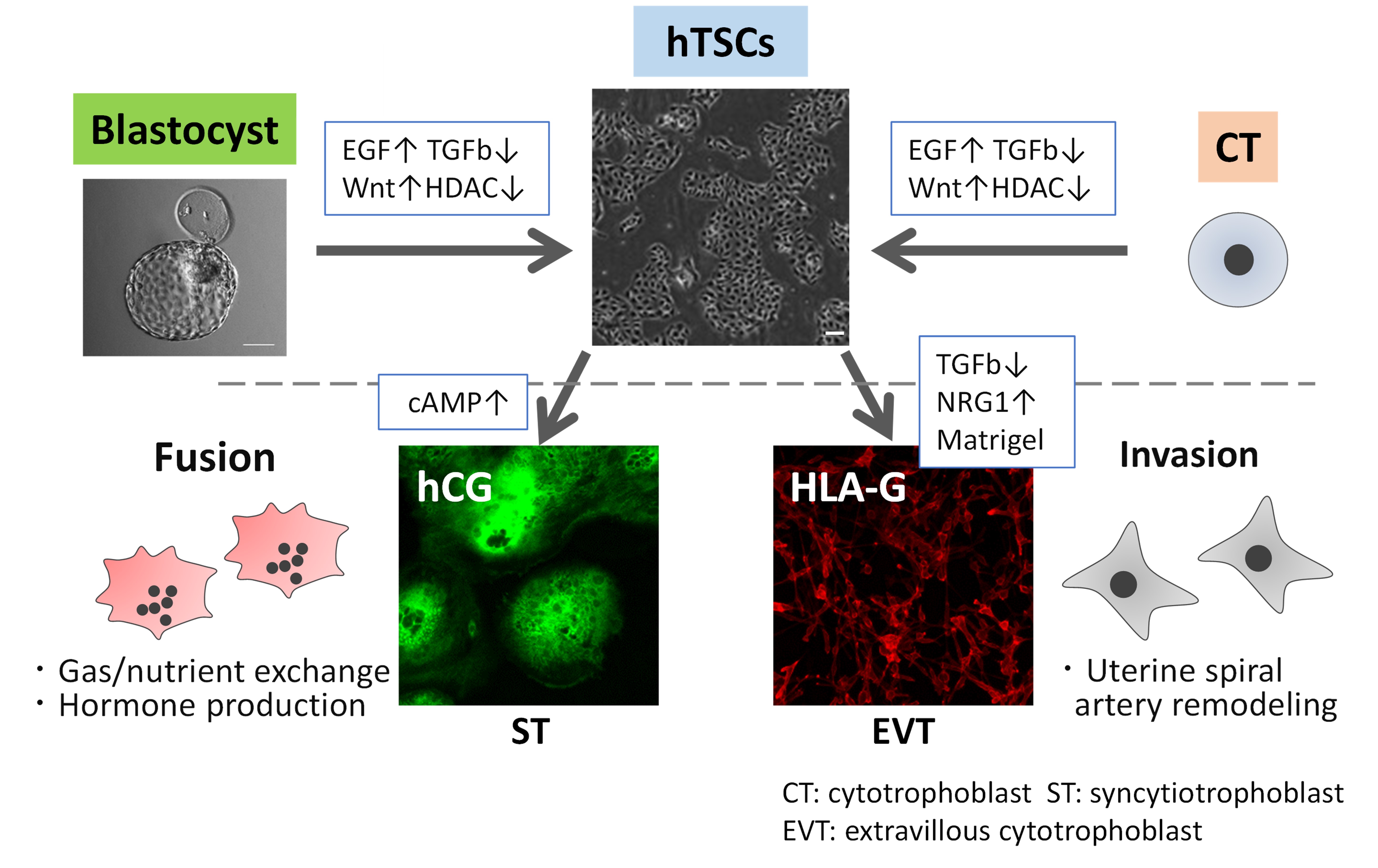
Derivation of human trophoblast stem (TS) cells
ヒト胎盤幹(TS)細胞の樹立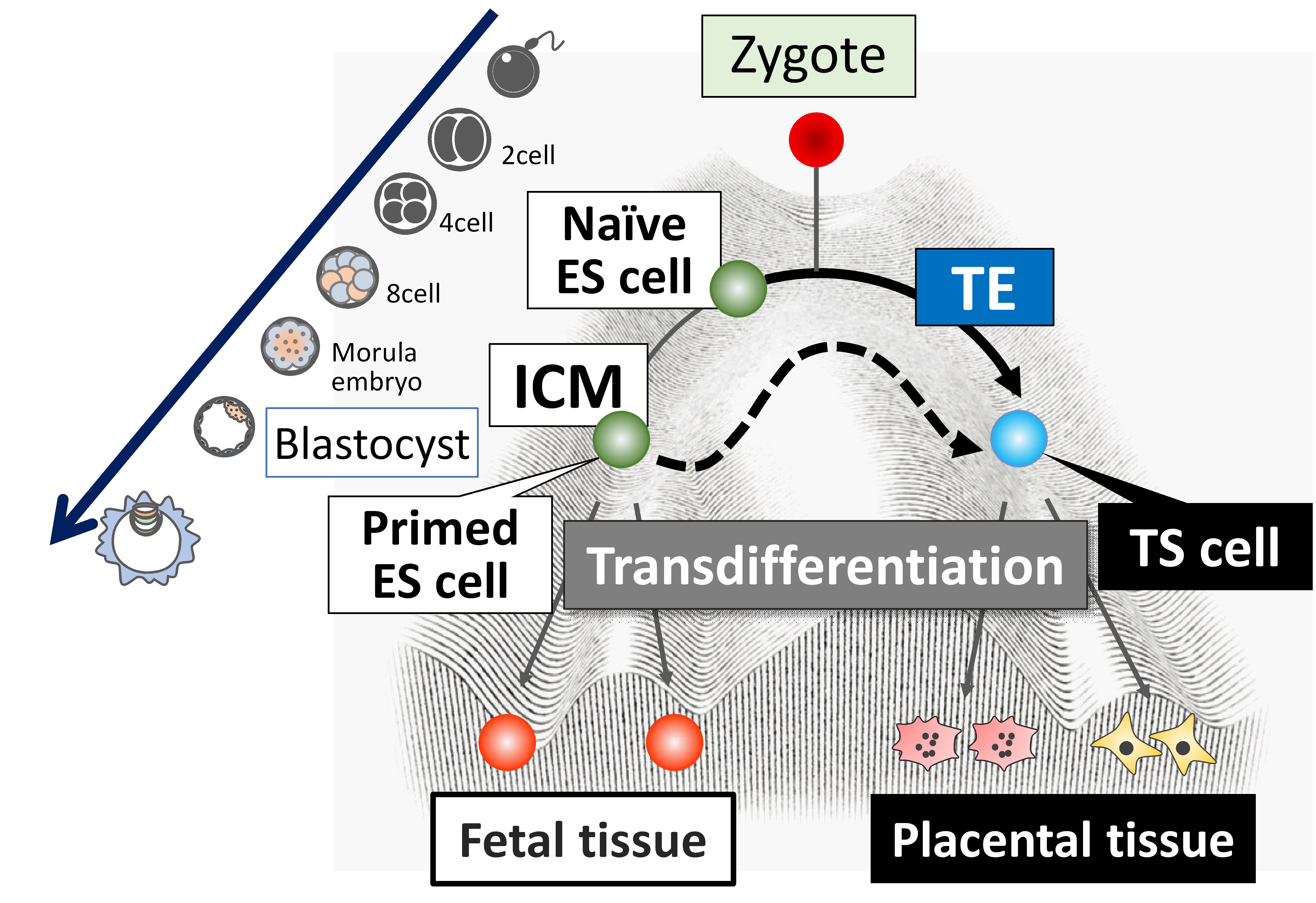
Epigenetics in human placental development
ヒト胎盤発生におけるエピジェネティクス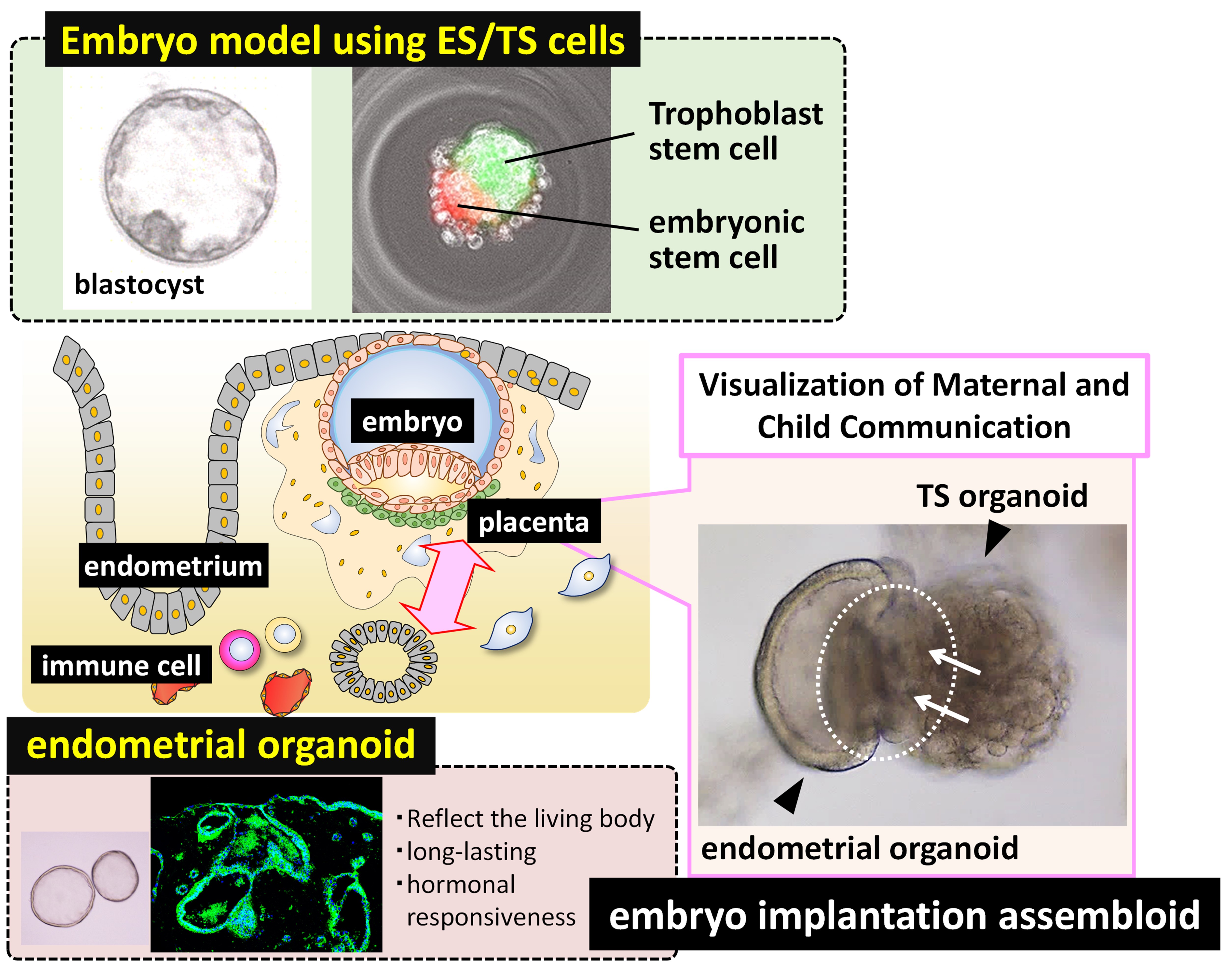
Construction of human embryo implantation assembloid model
ヒト胚着床アセンブロイドモデルの構築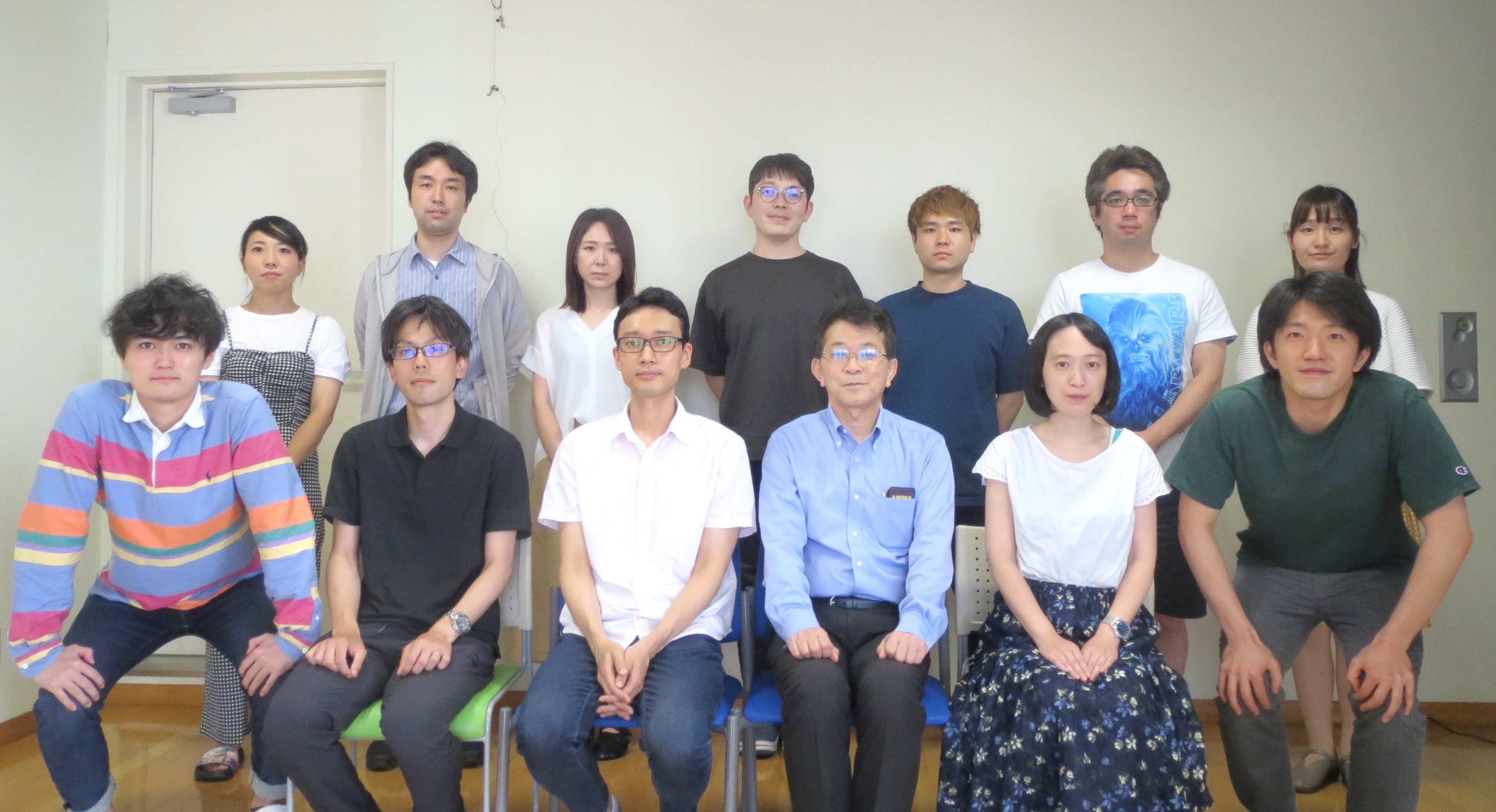
Lab members
研究室のメンバー
ARTICLE
Kobayashi N, et al. The microRNA cluster C19MC confers differentiation potential into trophoblast lineages upon human pluripotent stem cells. Nature Communications. 2022, 13:3071, 2022.
URL:https://www.nature.com/articles/s41467-022-30775-w
Shibata S, et al. Unique features and emerging in vitro models of human placental development. Reprod Med Biol. 19(4):301-313, 2020.
URL:https://onlinelibrary.wiley.com/doi/10.1002/rmb2.12347
Takahashi S, et al. Loss of p57KIP2 expression confers resistance to contact inhibition in human androgenetic trophoblast stem cells. Proc Natl Acad Sci USA. 116(52):26606-13, 2019.
URL:https://www.pnas.org/content/116/52/26606
Okae H, et al. Derivation of Human Trophoblast Stem Cells. Cell Stem Cell. 22(1):50-63.e6, 2018.
URL:https://www.sciencedirect.com/science/article/pii/S1934590917304563?via%3Dihub
Stunnenberg HG et al. The International Human Epigenome Consortium: A Blueprint for Scientific Collaboration and Discovery. Cell. 167(5):1145-1149, 2016.
URL:https://www.sciencedirect.com/science/article/pii/S0092867416315288?via%3Dihub

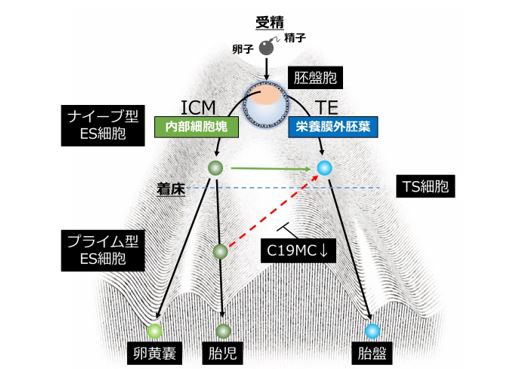 ヒト受精卵から胎盤が発生する仕組みを解明ー生殖補助医療や再生医療への貢献に期待ー
ヒト受精卵から胎盤が発生する仕組みを解明ー生殖補助医療や再生医療への貢献に期待ー